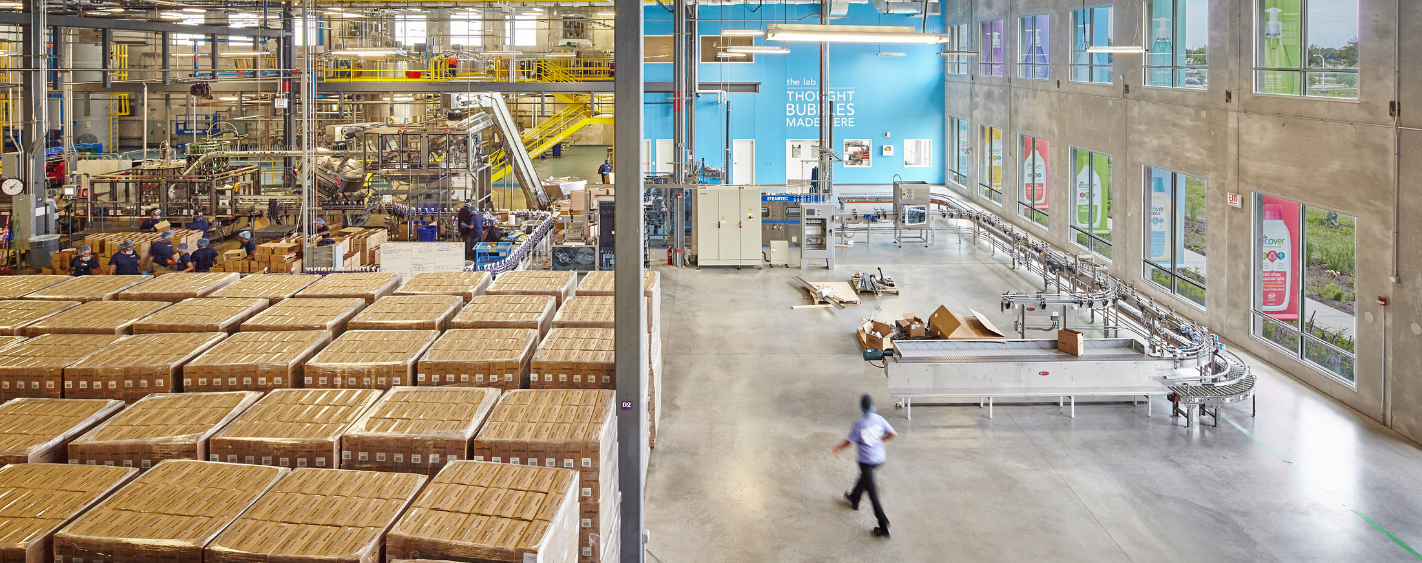
We’re celebrating LEED Week from October 11-15. Check out the full LEED Lookbook of 50 iconic LEED-certified projects across the world that are providing more sustainable, efficient and healthy spaces for their occupants — from family homes to skyscrapers.
By using LEED, these projects have already shown their commitment to a better, more sustainable future. To obtain, maintain and improve upon that level of performance, these projects are among the 21,000 across the world currently track their data within the Arc platform. Arc helps any space or building manage performance across five areas: energy, water, waste, transportation and human experience. Work toward recertification and Operation + Management goals through Arc.
LEED Gold Empire State Building in New York, New York
Arguably one of the most well-recognized buildings in the world, the Empire State Building hasn’t rested on its laurels. It has been recertified twice, most recently achieving Gold in its LEED v4 Recertification. All 6,514 windows are modernized, quadrupling the energy performance while reusing over 96% of existing materials all on-site. Further, elevators use a technology called “regenerative braking,” which allows them to store energy when they slow to a stop and redirect that power back to the building. 100% of its electricity consumption has been offset with Renewable Energy Credits since 2011.
LEED Gold JR Kanda Manseibashi Building in Chiyoda-ku, Japan
Originally a railway station, this converted office space still maintains the station in the bottom half of the building. Each floor has a “winter garden” featuring operable windows and greenery, reducing the need for air conditioning. Bicycle parking and showers are available for tenants to encourage environmentally responsible commuting.
LEED Platinum Willis Tower in Chicago, Illinois
The iconic Willis Tower is not only the third tallest building in the United States, and a pillar of sustainability practices. It has been recertified twice, most recently in 2019, when it achieved Platinum for its LEED v4.1 Recertification. Willis Tower earned LEED Gold in 2018, and in less than a year, made significant energy, sustainability and comfort improvements to recertify as LEED Platinum through their progress within the Arc platform. The iconic building pursued both an initial LEED 2009 certification while simultaneously completing the recertification tasks for LEED v4.1. By using the Arc performance platform, the Willis Tower is able to use data to monitor performance and make dramatic improvements.
LEED Gold Museu do Amanha in Rio de Janeiro, Brazil
Designed by Santiago Calatrava, the Museu do Amanha serves multiple purposes, including educating visitors about the impending effects of ecological degradation and climate change. The museum’s sustainable architecture reflects the function of the museum and is constructed primarily from local materials. To further assist their goal of reducing environmental damage, the air conditioning system uses water funneled from Guanabara Bay to save approximately 6,604 gallons (25,000 liters) of water per day. Solar panels move with the sun to maximize energy absorption. The result is energy savings of 50% compared to conventional buildings.
LEED Platinum Condominio Comercial Eurobusiness in Curitiba, Brazil
Condominio Comercial Eurobusiness was the first LEED Zero Water certified project in the world. The 110,990 square foot (10,311 square meter) commercial office building achieved LEED Platinum certification in March 2016 and LEED Zero Water certification in August 2019. Alternative water sources, including captured rainwater, AHU condensate, subsurface infiltration and gray and black water contribute to an 82% reduction in potable water use. All wastewater is treated for reuse using a constructed wetland located on the roof.
LEED Certified Sede Centrale Ca Foscari in Venice, Italy
Sede Centrale Ca Foscari is one of the oldest LEED-certified buildings in the world. The Venetian Gothic palazzo was built in 1453 and is over 560 years old. Overlooking the Grand Canal, Sede Centrale is the headquarters for Ca’ Foscari University of Venice. As part of the historic city center and a UNESCO World Heritage site, Sede Centrale is subject to restrictions that ensure preservation of its historical, cultural, and artistic value. The project team got creative in order to increase energy efficiency without disrupting the historic exterior.
LEED Platinum Method Soap Factory (People Against Dirty) in Chicago, Illinois
The Method Soap Factory was the first LEED Zero Waste certified project in the world. Located in the Pullman Factory District in Chicago’s South Side, its 75,000 square foot (6,968 square meter) rooftop greenhouse produces one million pounds of food annually, which is sold to local restaurants. The factory itself houses manufacturing, bottling, and distribution all under one roof, which dramatically cuts down on its carbon footprint. A 230-foot (70 meter) 600kW wind turbine produces about 30% of the factory’s energy, and three solar trees each with 60PV modules can supply 45.9 kW of energy.
LEED Gold Antiguo Palacio del Ayuntamiento in Mexico City, Mexico
Antiguo Palacio del Ayuntamient was the first historic public building to be LEED certified in Latin America. Originally constructed in 1527, the old city hall in Mexico City is one of the oldest LEED for Operations and Maintenance projects in the world. In 2021 it achieved LEED Platium for its LEED v4.1 Recertification. Two indoor courtyards and small balconies across the facades promote fresh air and natural light throughout the building. Impressively, 99% of buildings occupants commute to work without using a single vehicle.
LEED Platinum DEWA Solar Innovation Centre in Dubai, United Arab Emirates
The DEWA Solar Innovation Centre is part of the Mohammed bin Rashid Al Maktoum Solar Park, developed to showcase the latest renewable and clean energy technologies. The building consists of 4 floors covering 43,056 square feet (4,000 square meters) and a height of approximately 90 meters. On-site renewable energy production includes building-integrated photovoltaics producing 441,139 kWh every year, a 13 MW photovoltaic solar plant producing 944,281 kWh a year and a solar hot water system generating 35,059 kWh annually. Further, water use has been reduced by 54% for all its fixtures and by 50.9% for its flushing fixtures. Additionally, the building harvests rainwater, treats graywater on site and 97% of storm-water runoff is treated.
LEED Platinum Vancouver Convention Centre West in Vancouver, Canada
Vancouver Convention Centre is a double LEED Platinum-certified convention center. The West building sports a six-acre living roof, the largest in Canada, featuring more than 400,000 indigenous plants and grasses. The roof is designed to act as an insulator, reducing heat gains in the summer and heat losses in the winter. It also possesses a unique seawater heating and cooling system that takes advantage of the adjacent seawater to produce cooling for the building during warmer months and heating in cooler months. A restored marine habitat is built into the foundation of the West building. Water quality in the area has improved dramatically, with the growth of a large variety of sea life.
LEED Gold Delhi Metro Rail Corporation (Pragati Maidan Metro Station) in New Delhi, India
The Pragati Maidan Metro Station owned by the Delhi Metro Rail Corporation is the first transit system in the world to earn LEED certification and has achieved a number of sustainability feats. The Inverter based Variable Refrigerant Flow energy efficient system translates into energy savings of approximately 30-35%. 85 kWp solar panels generate 12-15% of station auxiliary consumption. LED lighting contribute to a 40% energy consumption savings compared to conventional lighting fixtures.
Do you want to learn about other impressive LEED projects? Check out the new LEED Lookbook.
